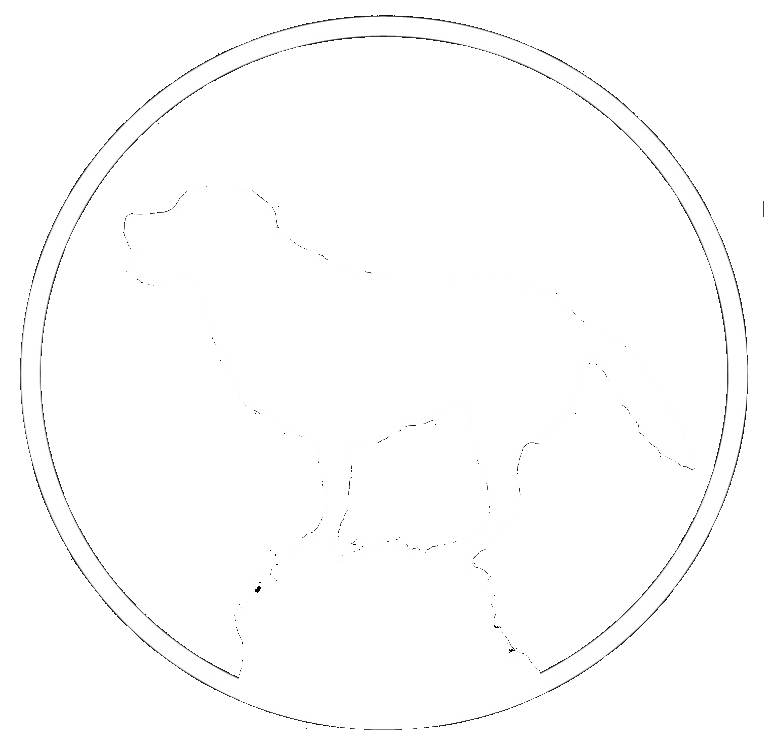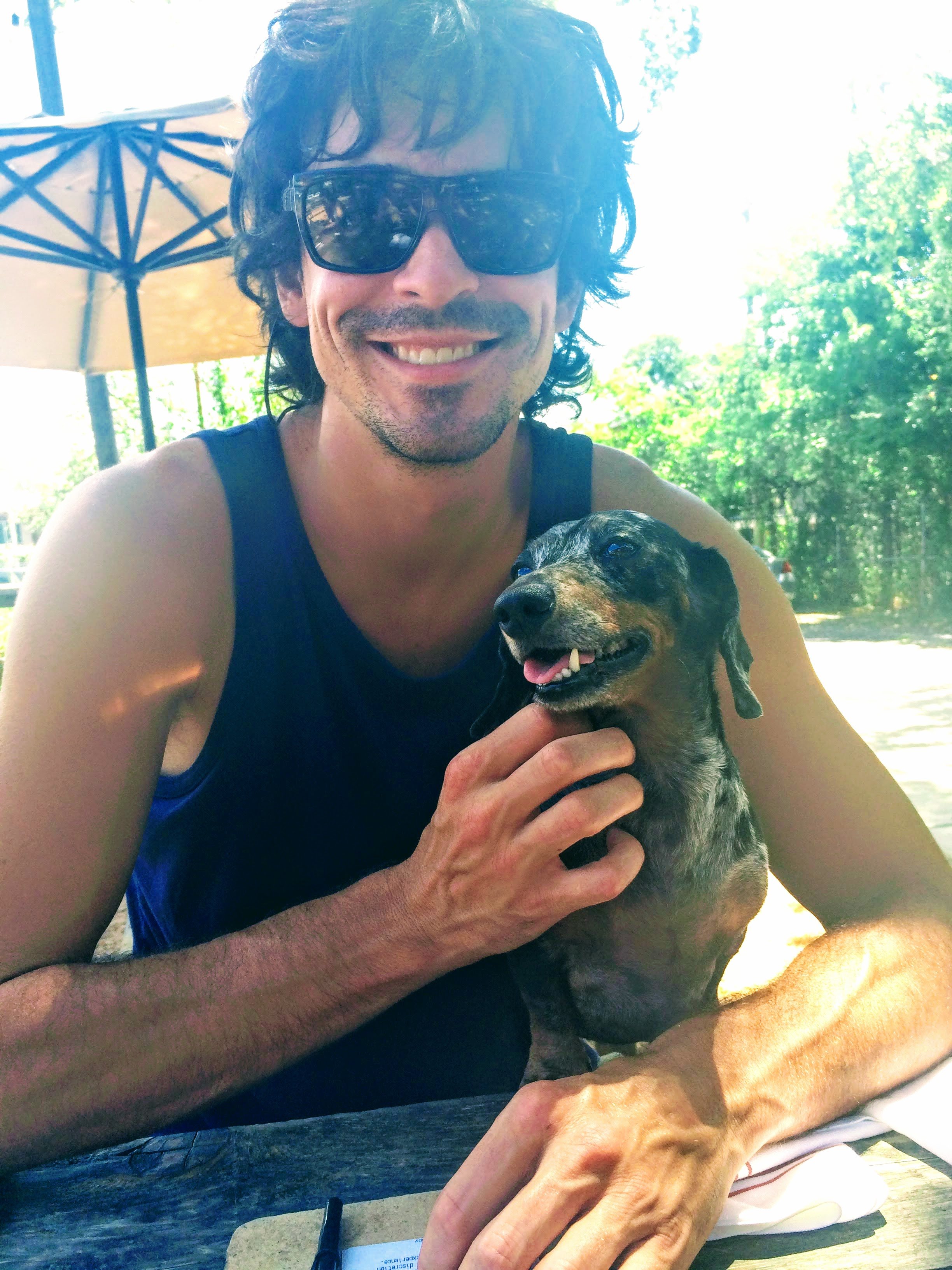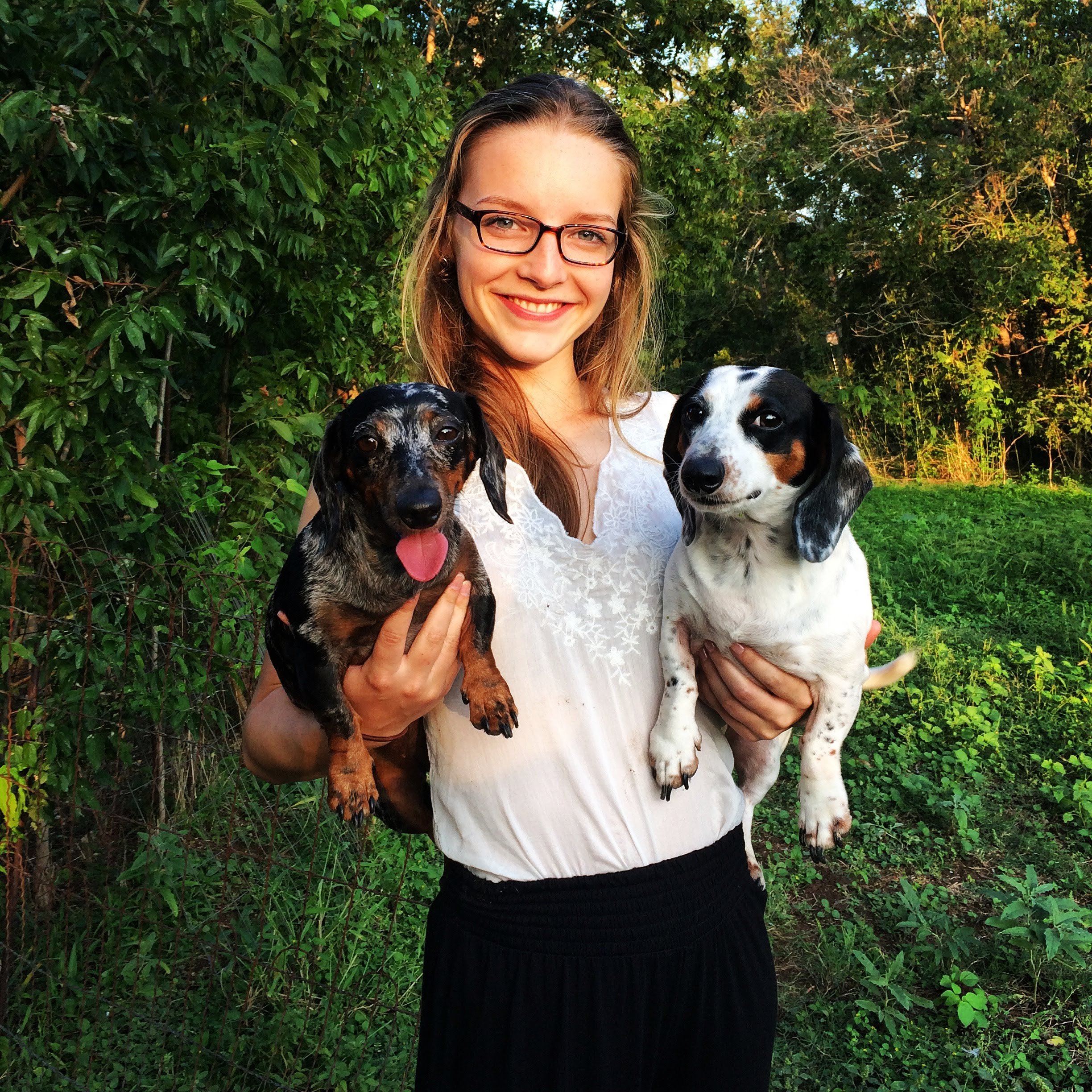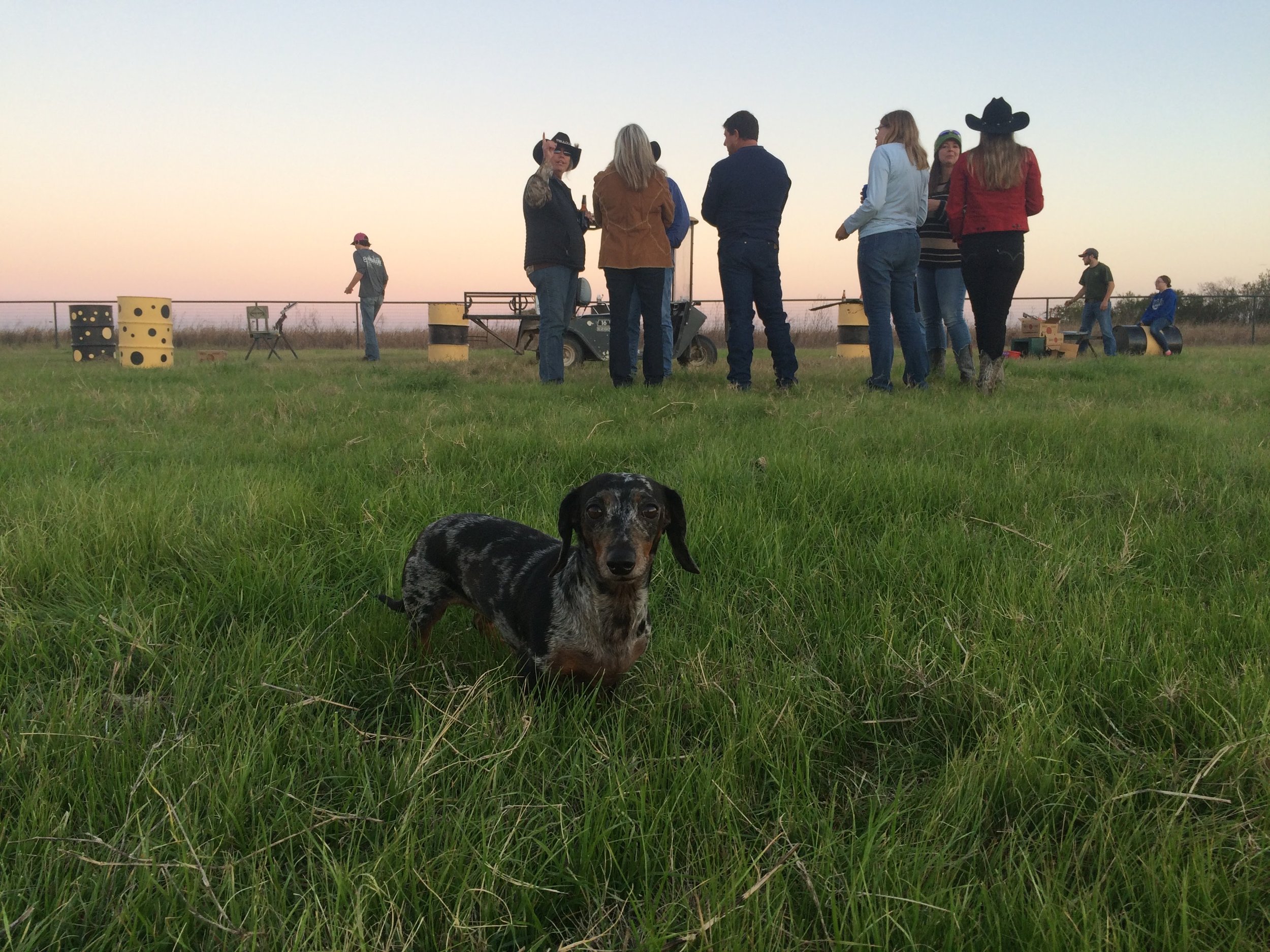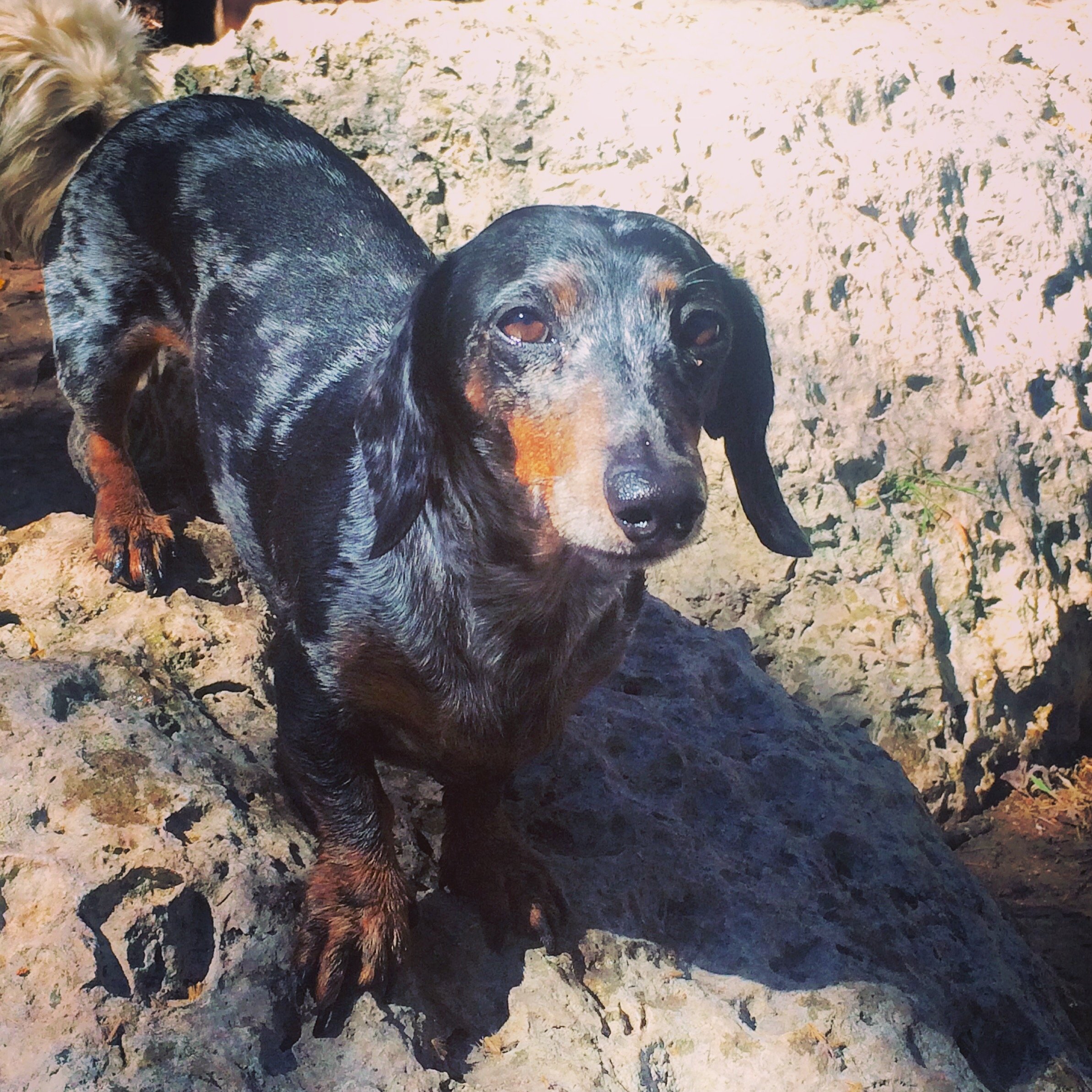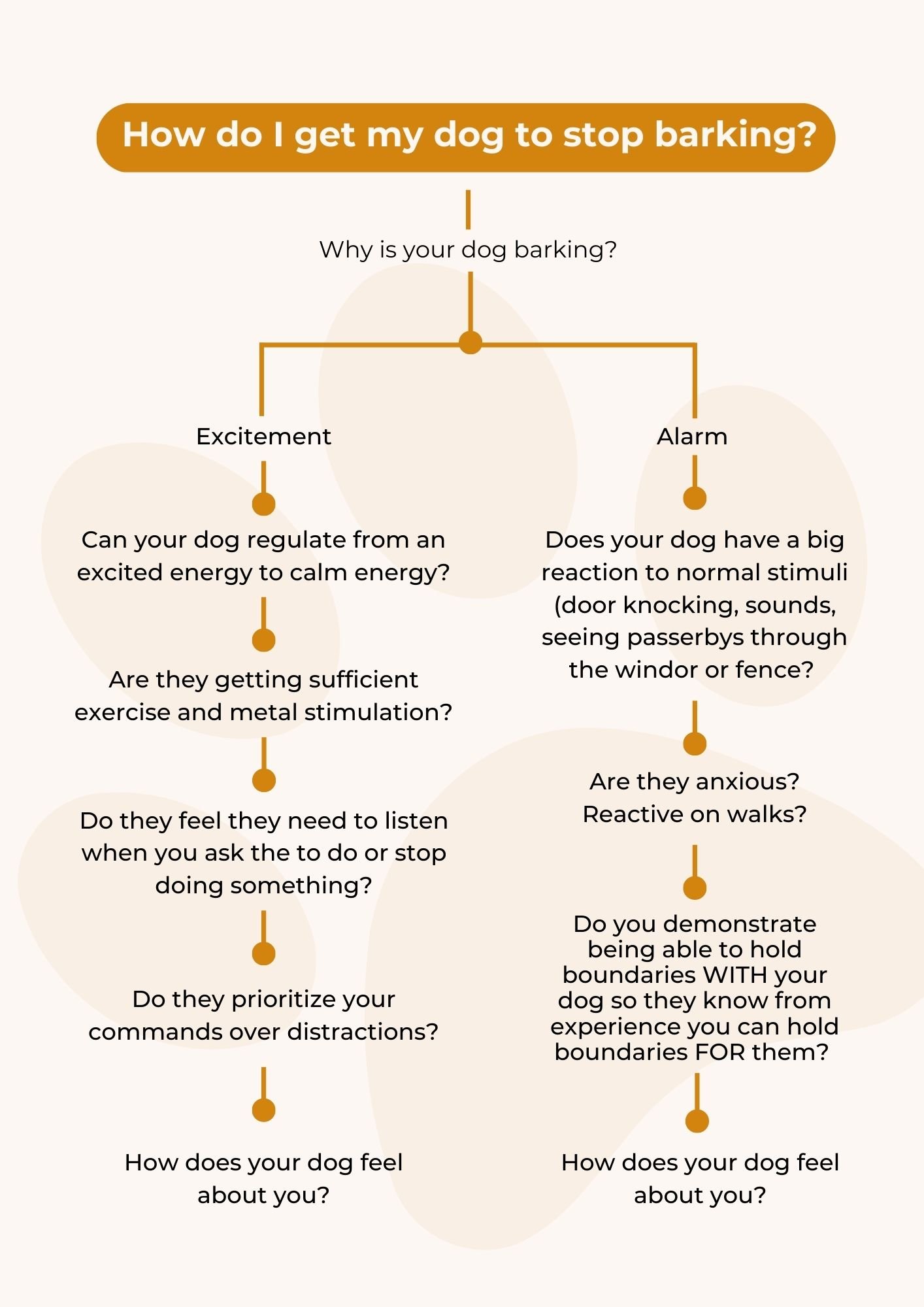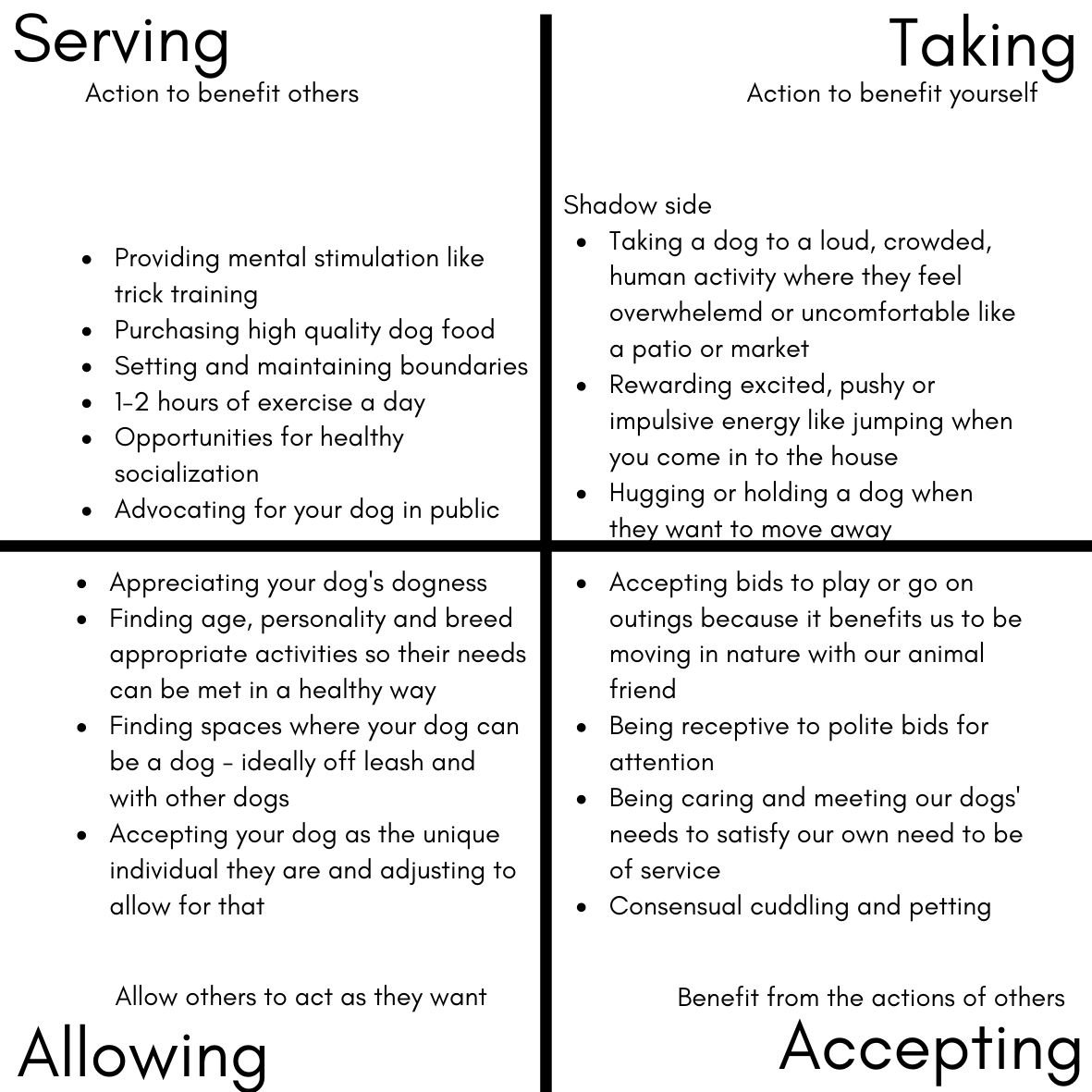“My dog is my best friend.”
This is something that I hear all the time. It is certainly something that I thought and said over my early years of dog ownership. After I lost Harley, the word I would use when I talked about her was not friend, not baby, but “dog.”
She was my dog.
The most wonderful thing she could be.
I’ve never had a relationship like the one I had with my dog. In my life, I've had a lot of friendships and that word, while warm and intimate, doesn't capture the unique depth and connection of the relationship with my dog.
She was my companion.
She was my charge: a little life that I was wholly responsible for.
She was my teacher and inspiration for learning and healing.
She was another heartbeat in the room when I was alone.
I understand why people call their dog their friend, but I'd like to challenge this concept because it’s actually bad for dogs when we call them a friend and try to put them into this human role.
To want a close friend or a best friend is an appropriate and natural human need that we have to find human ways of meeting. Our love for our dog and the intimacy we feel with them is a taste of what is possible in connection with others, but it doesn’t put a check in the box of the friend category for us.
Because we don't speak the same language as our dogs, they can appear to be a perfect friend.
We can imagine they think how we would want them to think and feel how we want them to feel. The misunderstandings with our dogs are easy to ignore, while in our human relationships misunderstandings abound, wound, and disrupt.
What I wanted to share in this article is something that we as adults think we should know how to do, but actually don’t: how to make a friend.
Because I moved so much as an adult and because I changed so much once I settled down in Austin, making friends is something I got good at. The more confident I felt about my ability to make friends, the easier it was to let go when a friendship had gone sour, stale or wasn’t quite right.
Step 1: Learn to be alone
Just like with dog training, the friend making process starts a few steps back from where we would think it would. The first step is to be comfortable being alone. If I'm making friends to have company for company's sake, to distract myself or numb from pain or hurts I'm not ready to deal with, the motivation is ‘away from.’ I’m moving away from boredom, away from pain, away from an internal question about whether I am likable or worthy. When I do that, I enter the terrain of the hungry ghost. No matter how much I eat, I will never be full because I am nourishing my avoidance.
Before we can truly “be” with anyone we have to learn to be alone. When I started a 12 step program years ago I was confronted with the reality of how much anxious energy I was putting into pursuing people who I didn’t really like that much and who weren’t returning the effort, energy or interest in me. This wasn’t good for me - I didn’t know I deserved better than that. I was scrounging for social crumbs because I didn’t want to be alone. Any action driven by anxiety will be a temporary fix.
Exercise:
Instead of compulsively filling your schedule or making plans with people who don't truly fill your cup and leave you feeling better than you would otherwise, schedule time alone. In The Artist's Way, Julia Cameron suggests taking yourself on a date once a week. You can plan something that you enjoy doing, but rarely get around to, have always wanted to explore, or enjoyed as a child. You could also block out a few hours and leave the window open for spontaneity.
When we learn to enjoy our own company we can approach relationships from a place of grounded desire, not anxious lack.
Step 2: Get to know yourself
This time alone is vital to get to know yourself. Solitude is necessary to know who you are and the truth of that is ever changing. Many of us develop a concept of our personality and preferences that we experience as being static. The people in our lives can reflect back to us who we were. They even may not want us to change because it would point out to them the ways they don’t, won’t, or haven't.
Exercise:
In your time alone, journal and daydream. Allow yourself to surprise yourself. Instead of referencing a premade checklist, go into your body, connect to your inner compass and at each small crossroads throughout the day, ask yourself what do I want right now? When you choose your choice, pause and see how it feels in your body.
Hold the phone before you call someone and see if your internal thermostat rises or falls. When you get to the coffee shop, look at the menu instead of placing your regular order to see if anything unexpected jumps out at you. When you dine out, listen to the specials. When you shop, see what tickles your fingers before your mind can assess it. Try something you are sure you don’t like again just to see if that is still true.
Once you have a read on this internal navigation system, let that be your guide in your relationships. The answers you get may surprise you!
Step 3: Update your friend list
In order for something new to come into our lives we need to leave space to fill it. For many of us, our social dance card is full, but we still don’t feel fulfilled and connected in the way we want to.
It is a little accepted truth that somehow, without our awareness, the people who add the least or take the most of our energy and vitality somehow take up most of our time. I find the people who bring the most value are the ones I'm reluctant to call. This isn't to say that we should be selfish and only engage in friendships where we are learning, growing or benefiting. There is huge value to being of service to someone in need. This is to say that it takes extra awareness and dedication to make sure that the five people we spend the most time with are ones that encourage us to grow and open us up to better versions of ourselves.
A few years ago I found myself saying yes to plans I knew I didn’t have desire or time for. I wanted to say yes so it wouldn’t be awkward, but I didn’t like that I was out of integrity and letting people down. That was exactly who I never wanted to be, but my social plate was too full. I was maintaining the relationships out of habit or a desire for continuity instead of paying attention to who was really lighting me up and filling my cup.
I made a list of everyone I knew from text messages, social media platforms, and photos. I dug up lost connections that I wanted to revive. I listed each name, divided everyone by category, and then marked each with an emoji.
❤️ Inner circle
⭐️ Close friend
✅ Friend
🟣 Acquaintance
I moved these on to a sheet I printed out with three concentric circles. The center is my inner circle, my absolute closest friends. This group should be no more than five. Next was my close friends, the people that I wanted to talk to regularly. The largest circle was for my friends, the people I wanted to stay in touch with, but didn't need to be in touch with regularly. Everyone who didn't make one of those three groups was an acquaintance who I would be happy to see when I saw them, but didn’t need to keep up with.
Admittedly this process felt a bit brutal, but it was necessary. It felt good to be honest with myself. There were a few times I had to go back and downgrade someone who I needed to admit I didn’t need to be putting as much time and energy into as I was.
Exercise:
Assess your current relationships with family and friends. Figure out who is most important to you to be close to so you know that it’s important to invest your time and energy into those relationships. Allow the ones that don’t fulfill you to fade away for now. You don’t need to have any conversations about it or cut anyone out of your heart. This list will flow, but it’s important to know what’s true for you right now. Just like cleaning out your closet, this exercise may be easy to put off, but will feel so good to have completed.
Step 4: Values
I know you're probably wondering when we will get to the part where we actually get to make friends. It’s coming. Unless I go through the foundational work, I find the results of my efforts will be similar to the ones I am currently getting.
Many of us have a vague ideal of what’s important to us, but never actually clarify. Once we understand our values they can be our guide.
Exercise:
Journal on what is most important to you.
What qualities are important to you in the people you spend time with?
What qualities do you want to develop?
What qualities or values do you most like about yourself?
And who are the friends who bring those out in you?
What are your favorite hobbies or interests?
What's one you let go of that brought you joy and you'd like to pick back up?
How about a list of five things you always wanted to try?
Go through your list of friends again with this in mind and see if you'd like to make any changes. We may have an old friend who doesn’t bring out the best in us. Perhaps someone we’ve known for a long time doesn’t behave in integrity, but we’ve gotten used to it. Maybe a friend is good at something we want to learn or makes time for something we wish we did more of, like classes, volunteer work, gardening or the arts. A person you love teases you in a way that leaves you feeling depleted. A friend of a friend always builds you up and you have been wanting to get closer to them, but haven’t had the energy. The time to switch things up is now!
Step 5: Find the like-minded
My interests have expanded, contracted, and changed over time. While inertia and habit would have me stay the same, as enjoyable as anything is for a while, it tends to grow stale. I go numb to it or it becomes a chore.
Maybe something I used to love doesn’t fill my heart in the way it used to. Sometimes I get bored dabbling and need to take lessons to get better or join a group to do it more regularly.
In the past my ego has prevented me from trying new things because it couldn’t stand to be bad at something during the learning process. Whatever you choose first, be sure to bring your humility along. It isn't easy to be bad at something as an adult. With anything new, the truth is you can’t be bad at it, you just haven't learned to do it yet.
Ideally a hobby or activity is a regular part of your recreation time. For our purposes right now we are looking for something that can be done in a group or has a social aspect.
On your solo dates you may have found something you want to learn or pick back up. Now that you are in touch with your inner compass you may have learned you want to take a break from something you thought was a part of who you were.
Exercise:
Picking up something new can feel daunting. It takes effort to find an opening to a new activity in our area that fits with our schedule. Between the hobbies and interests you want to explore or pick up again, the ones you currently have and love, and the ones you are interested in trying, but never have, pick five to 10. Make three that a priority and leave the others to explore over the year.
Start with one and search for what is going on in your area. I've had success in regional or activity-based Facebook groups, on meetup.com or searching for classes in my area. Don’t worry about choosing wrong - the only thing you stand to waste is a little bit of time and money. Every “miss” is a step closer to finding what you love doing and building relationships with people who also love doing it that you can share that activity with.
Step 6: Be unabashedly bold
We can struggle to think of ourselves as someone in need of friends because it feels desperate. The truth is there are many other people who are just like you, seeking connection, but perhaps embarrassed to put themselves out there for exactly this reason. We think that as an adult friends should be a checkbox that we have already filled in. Part of our self worth is based on having people who like us. Because our social world, like ourselves, is constantly evolving, making friends is an ongoing process.
I have made more new friends by doing things alone than with friends. Yes, it's a little bit awkward at first, but if I can push through that, doors open. I project an open and friendly energy when on my own in public, one that is warm and inviting. If I can get over my shyness or self judgment about having to debase myself thus and introduce myself to strangers, I have found, by and large, people are receptive.
I have posted in Facebook groups or on Instagram asking if anyone wants to meet up for an activity. I’ve posted in interest groups, asking if anyone in my area wants to get together and engage in said interest together. I’ve started groups when there wasn’t one and community grew into the hundreds after I got the logistical jump on it.
Be bold.
Be shameless.
The potential cost of momentary embarrassment is well worth the connection. You have the possibility of creating. When I put myself out there, I never know who can come into my life. It doesn't happen every time but the times when it does happen makes it worthwhile.
Exercise:
Whenever you are in public, in line at a coffee shop, waiting for a drink at a bar, or doing an activity, practice talking to someone. Look around the environment and say something you are thinking out loud. If someone doesn’t pick up what you lay down, that’s okay! This is an exercise in putting yourself out there, not in how you are received. The more practice you get being you and sharing that with those around you, the more likely you are to find those who are going to resonate with you.
Post in a group and ask strangers if they want to meet up. Ask someone at an activity for their number and reach out to make plans. Think of this early phase as just shaking off the awkwardness around putting yourself out there.
Step 7 Give it time and keep your chin up
It is important to not expect an immediate result. You may not strike gold right away, but no prospector does. If you want a treasure you have to be prepared to go on the hunt.
Looking at your calendar and make sure each month you have left:
Time for yourself
Time for activities you enjoy, ideally social ones
Time to connect with your inner circle
Time for a new activity
And time to explore new relationships
Unfortunately, if you are not intentional in this process it is not likely to happen on its own.
At first these changes will feel a little bit forced and awkward, but that's okay. If you are not accustomed to spending time alone, let it feel weird. When that lonely, anxious, stir crazy feeling comes over you do your best to make space for it without acting on it. Something magical is just underneath those knee jerk reactions if we can wait them out.
This is a skill we are trying to teach our dogs. We don't want to be driven by impulse. We want to be able to steer our own ship.
As you build new friendships, make sure you make time to water them. New relationships take a little bit more effort while they are in the exploratory or bonding phase. If you haven’t made a new friend in a while, this can feel like a lot of work, but it’s worth it. Connecting will get easier the more you try. Find the balance of giving a connection a chance to bloom, but not forcing something that isn't the right fit.
Exercise:
Be intentional and write down the names of one or two people you want to get closer to. Make sure you check in weekly and make plans at least monthly. If the person can’t commit or isn’t receptive, move on. You aren’t trying to build a fan club, you are trying to find your people. Quantity is the enemy of quality at this stage.
Step 8: Navigate difficult moments
No matter the quality of the connection, the path is never without bumps. If it was, that connection is probably superficial. Expect budding relationships to fade away. Find the balance between trying to revive them and redirecting yourself to other more vital connections.
Expect to say the “wrong” thing or for someone else to. If you have erred, apologize. If you think someone is pulling away, reach out and ask. If someone said or did something small that hurt or offended you and turned you off, practice gently bringing it up. If they respond defensively when you were being vulnerable, take that as an indication of where they are at, not of the value of your feelings or sharing.
Healthy relationships are not ones without conflict, they are ones that can healthily navigate conflict.
Exercise:
When something comes up for you or when it seems to come up for someone else, practice bringing it up in a timely, soft and vulnerable way. This doesn’t always go well, no matter how perfectly you word your feelings, but these moments of conflict are vital for real connection to grow.
In conclusion…
The warm intimacy and love we feel for our dogs is an inspiration for what we want to feel in our relationships, but it should not be the final destination. The more I fill my social cup with human friendships that challenge and fulfill me in a human way, the more space I have for my dog to be exactly what they are: a dog. Honestly, I can't imagine anything that is better than that.
